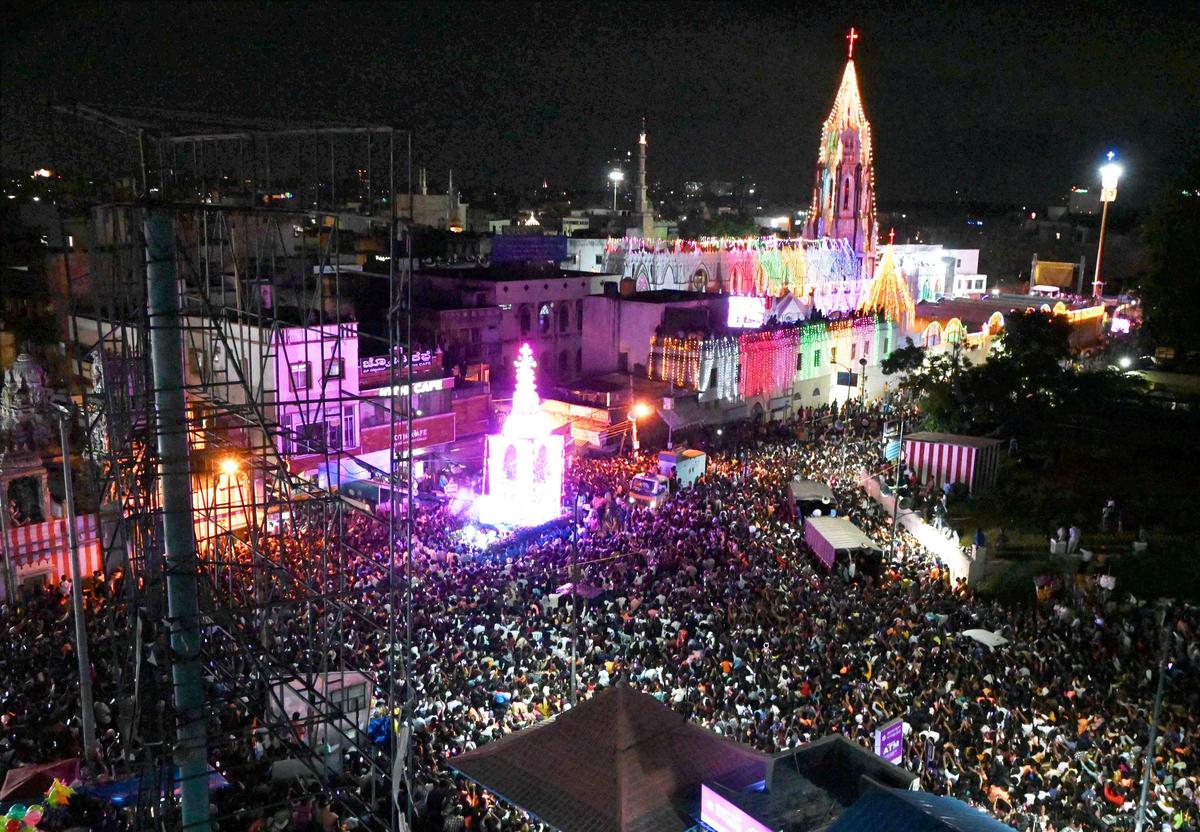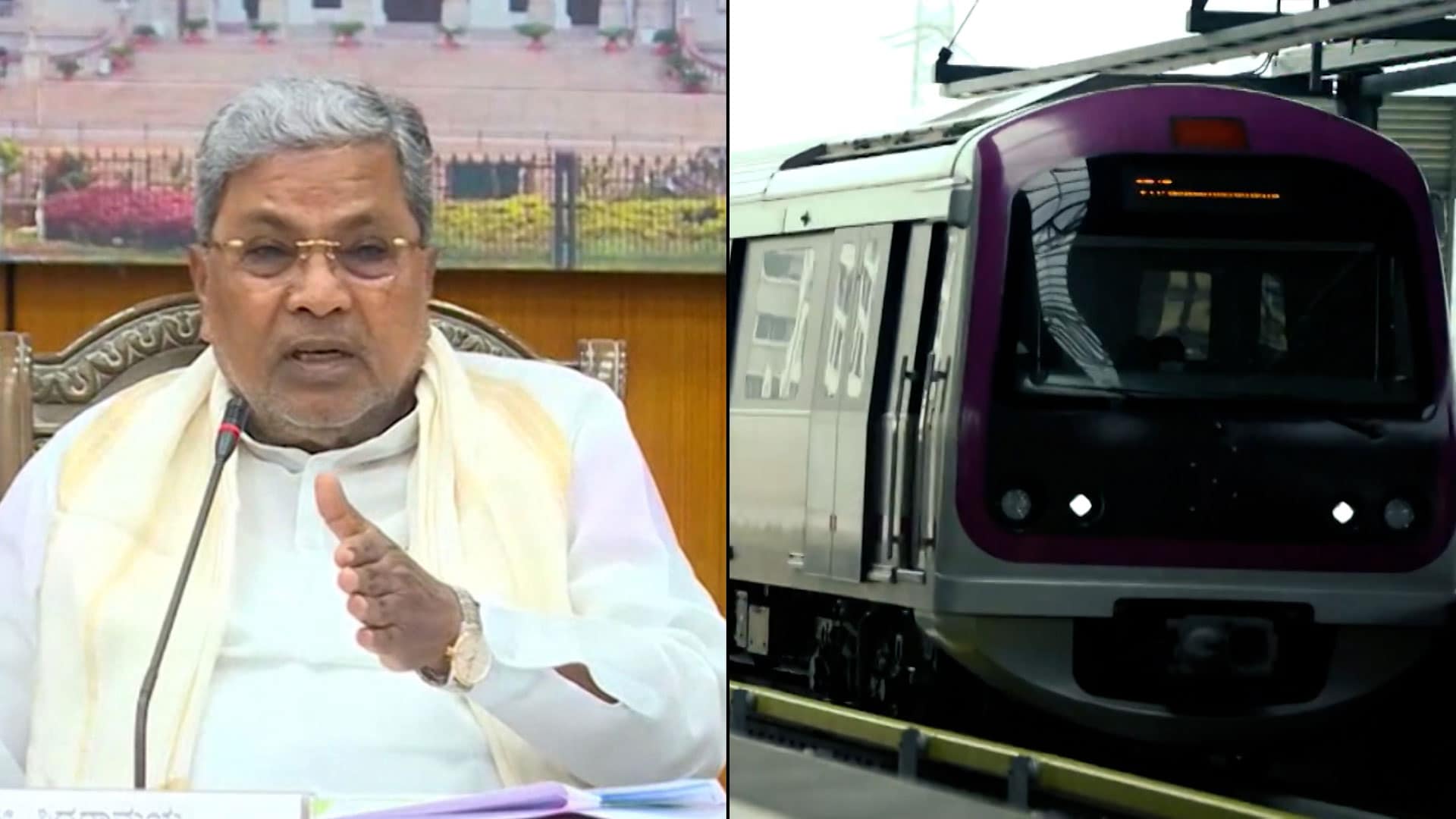The naming of Bengaluru’s metro stations has long carried layers of emotion, history, and politics, and the latest debate surrounding whether a prominent stop should be called Shivajinagar or St. Mary’s has reignited passionate discussions. Names are never merely labels; they represent cultural pride, historical memory, and social identity. For commuters, a name helps them navigate a city, but for communities, it signifies recognition and respect. In this case, Shivajinagar represents Bengaluru’s deep-rooted local heritage, while St. Mary’s symbolizes a spiritual landmark cherished by generations. The clash underscores how identity and infrastructure are entwined in urban life.
Many residents argue that the station should be called Shivajinagar, noting its significance as one of the city’s oldest neighborhoods. The locality has been a hub for trade, cultural exchange, and communal living for centuries, and its name carries a resonance beyond geography. Advocates for this choice believe that keeping Shivajinagar on the metro map will preserve Bengaluru’s indigenous history while reinforcing a sense of belonging for long-time residents. They argue that changing it risks erasing cultural memory, making the area appear detached from its roots in favor of a more neutral or religiously inclined identity, which some view as divisive.
On the other hand, those in favor of naming the station St. Mary’s emphasize the prominence of the St. Mary’s Basilica, a landmark of devotion and history in the city. The basilica has been a center of pilgrimage, drawing lakhs of visitors every September during the grand feast. Supporters believe this name would not only celebrate the church’s heritage but also serve as a marker for tourists who associate the locality with the basilica rather than the neighborhood’s broader identity. For them, St. Mary’s reflects not just faith, but also Bengaluru’s cosmopolitan blend of cultures, religions, and traditions.

Political Overtones and Identity Battles
The debate is not merely cultural; it has political undertones. Naming infrastructure in India often becomes a reflection of who holds power, and metro stations are no exception. Political parties see naming as an opportunity to please certain communities while signaling allegiance to their voter base. For Shivajinagar, local leaders argue that retaining the name shows respect to the city’s heritage and avoids alienating residents. For St. Mary’s, religious leaders and community representatives push for acknowledgment of the church’s role as a historical landmark. This tug-of-war has turned a practical decision into a symbolic battlefield of identity politics.
Urban planners and civic experts point out that such debates delay decision-making and distract from the main purpose of public transport: accessibility. They argue that station names should be chosen for clarity and ease of recognition, particularly for new commuters and visitors. Yet, they acknowledge that emotional and political factors cannot be ignored. Bengaluru’s growth into a global city has already blurred many neighborhood boundaries, but naming disputes reveal how deeply communities cling to identity markers. The case of Shivajinagar versus St. Mary’s is not just about a metro stop—it is a reminder of how infrastructure decisions ripple into larger conversations on heritage, inclusivity, and recognition.

What’s in a Name? More Than Meets the Eye
At the heart of this debate lies the universal truth that names matter. They are more than signboards; they encapsulate stories, histories, and sentiments of entire communities. For Bengaluru, choosing between Shivajinagar and St. Mary’s is not simply a technical decision, but a choice between two equally powerful legacies. Whether the final verdict honors geography or spirituality, the process highlights how urban development constantly negotiates with tradition. In the end, the name chosen will shape how millions remember and relate to this corner of the city, proving that indeed, what’s in a name is everything.

The metro station naming debate in Bengaluru has highlighted the growing intersection of faith, identity, and urban planning in modern Indian cities. The controversy surrounding Shivajinagar and St. Mary’s has escalated into a larger discussion about whose voices get represented in public infrastructure. This is not the first time such debates have emerged, and it likely will not be the last. Bengaluru, being a city with a diverse population, continues to wrestle with the need to balance inclusivity with heritage preservation, often leaving residents caught between sentiment and practicality.
For many residents of Shivajinagar, the name represents their everyday life, markets, streets, and livelihoods. It is not just a label but a reflection of their lived experience. This sentiment is especially strong among older generations who have witnessed the neighborhood evolve over decades. To them, a shift towards St. Mary’s risks diminishing their collective identity. They see it as an unnecessary imposition that prioritizes one landmark over the entire locality’s history. In this sense, the debate reveals how naming decisions can trigger deeper concerns about marginalization.
Supporters of St. Mary’s argue differently, highlighting the basilica’s historical value and religious significance. The church has been standing since the 19th century and is a point of pride for many Christians across Karnataka. Its name resonates far beyond Bengaluru, making it a cultural landmark known to people from other states and even abroad. Advocates insist that naming the metro station after St. Mary’s would provide easier recognition for visitors and pilgrims, making it not just a local but a citywide marker of identity.
Experts in urban sociology note that naming disputes are not unique to Bengaluru. Across the country, cities have repeatedly clashed over whether to preserve traditional neighborhood names or shift to labels tied to religious, political, or cultural landmarks. These disputes mirror deeper social dynamics, reflecting which communities hold influence in a given period. They also remind us that while metro stations are built for efficiency, their names often become battlegrounds of symbolism and recognition. The current debate is part of this larger national pattern.
The Bengaluru Metro Rail Corporation Limited (BMRCL), tasked with finalizing names, finds itself in a challenging position. On one hand, it must cater to commuters who value clarity and ease of navigation. On the other, it cannot ignore the demands of political leaders and community groups pushing for recognition. The institution’s neutral stance is often tested when public opinion becomes polarized. While officials may prefer pragmatic names tied to geography, they are not immune to political pressures that demand acknowledgment of certain identities.
Politicians, meanwhile, see these naming controversies as opportunities to consolidate support. In a city as electorally significant as Bengaluru, aligning with cultural or religious sentiments can influence public perception. Leaders who champion Shivajinagar’s name portray themselves as defenders of heritage, while those advocating for St. Mary’s present themselves as inclusive and respectful of religious history. This duality ensures that the debate continues not merely in civic offices but also in campaign speeches, rallies, and public discussions.
Public transport users, however, often express frustration at the prolonged arguments. For them, the name matters less than timely completion, affordability, and convenience of the metro. Many believe the debate has been unnecessarily politicized, diverting attention from improving services. Commuters argue that while names carry cultural weight, infrastructure should primarily serve practical needs. This view underscores the gap between decision-makers, who engage in symbolic battles, and everyday citizens, who prioritize utility over symbolism.
Cultural historians add another layer to the debate by reminding citizens of Bengaluru’s identity as a city of coexistence. For centuries, Hindus, Christians, Muslims, and other communities have lived side by side, sharing neighborhoods and cultural spaces. The Shivajinagar versus St. Mary’s issue, therefore, risks creating divisions where harmony has traditionally prevailed. Historians suggest that whichever name is chosen should emphasize unity rather than deepen divides. They argue that names should celebrate Bengaluru’s pluralistic past rather than highlight singular identities.
At the grassroots level, the debate has sparked conversations in households, markets, and religious spaces. Community meetings, informal discussions, and local media coverage reflect a city that is deeply invested in this decision. Ordinary citizens feel strongly about being heard, and many see this as a test of whether their cultural and historical contributions will be respected. The emotional investment in the issue shows that even small civic decisions can influence a city’s larger social atmosphere.
Ultimately, the resolution of the Shivajinagar versus St. Mary’s debate will set a precedent for future naming disputes in Bengaluru and beyond. The chosen name will not only define a metro stop but also symbolize how the city negotiates its cultural identity in the face of modernization. Whether the final outcome leans towards geography, heritage, or religion, it will shape the way Bengaluru remembers and presents itself. For now, the debate continues to echo in the corridors of power and the streets of the city alike.
Follow: Karnataka Government
Also read: Home | Channel 6 Network – Latest News, Breaking Updates: Politics, Business, Tech & More

